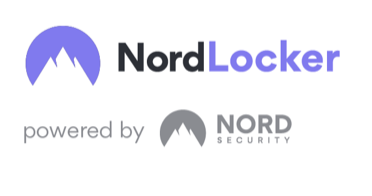Worst cyber nightmares: Mortifying scenarios of health care data leaks

By Viltare Ruzgyte From NordLocker
Since 2020, healthcare data breach costs have increased by 53.3%. The highly regulated healthcare industry has seen a considerable rise in data breach costs since 2020. For the thirteenth year in a row, the healthcare industry reported the most expensive data breaches, at an average cost of $10.93 million.
In a world increasingly reliant on digital technologies, the privacy and security of personal information have become paramount concerns. From confidential conversations with healthcare professionals to photos and details of plastic surgery, our most sensitive data can be vulnerable to cyber threats and unauthorized access.
Your most confidential and sensitive data in the public eye
Consider a scenario where you’ve been cautiously confiding in your psychotherapist, sharing your deepest fears, experiences, and desires. The therapist diligently records this information, carefully preserving it on their computer or in their notes. Rest assured, professional ethics dictate that this confidential material will not be disclosed to anyone else. However, the sobering truth remains – even the most trusted safeguards can fall prey to cybercriminals and be revealed to the public.
Similarly, envision entrusting a plastic surgeon with your insecurities, seeking transformative results that boost your self-esteem. The clinic dutifully stores your surgical photos and details in their database, ensuring your privacy. However, despite their best intentions, the theft of this data could result in its unwanted exposure to the public eye.
Consequences of cyberattacks on health care institutions
The health care sector is also particularly vulnerable because of the disastrous consequences an attack might have.
Indeed, scenarios where human health is at risk are among the worst possible. Imagine a situation where a cyberattack strikes a hospital’s IT system. The entire workflow could be instantly paralyzed, from patient record access to critical machinery operations. Those in desperate need of emergency aid might find themselves in a terrifying situation where help is not readily available or delayed. The consequences could be dire, even fatal.
How likely are these scenarios? Very likely because healthcare companies are one of the most vulnerable
You are mistaken if you think these stories are straight out of a science fiction novel. In the healthcare sector alone, 64 ransomware attacks were reported last year, according to recent research by NordLocker. Moreover, even the American Society of Plastic Surgeons warns the peer community about the increasing risk of cyberattacks.
“Despite an overall decrease in the number of ransomware attacks, there has been a concerning rise in the number of successful attacks. This means that hackers are not only launching global attacks, but also carefully choosing where to focus their attention in order to achieve maximum damage,” says Aivaras Vencevicius, head of product for NordLocker.
Vencevicius highlights that in an era where digital threats continue to evolve at an alarming rate, organizations and individuals that neglect their cyber defenses expose themselves to heightened vulnerabilities. With an increasing number of businesses recognizing the importance of safeguarding their sensitive data and critical assets, those that fail to prioritize cybersecurity become even more susceptible to malicious attacks and potential breaches.
The best actions to start with are:
- Proper file hygiene, encryption, and backups.
File hygiene and backups can’t stop cyberattacks but give the company leverage. Even if a company becomes a target for a cyberattack, the ability to restore data immediately will ensure business continuity. And if the company keeps the files encrypted, the information will be unreadable to hackers.
- Cybersecurity training.
Investing in your employees’ knowledge is the most cost-effective way to protect your organization because 82% of cyberattacks happen due to human error. Cybersecurity training should be organized regularly and have a holistic approach that includes every employee.
- Up to date software.
Most cyberattacks either use social engineering to exploit flaws in human nature or malware utilizing outdated software. Make sure that everyone at the company understands how important it is to keep software up to date.
- Zero-trust network access.
Every access request to digital resources by a staff member should be granted only after their identity has been appropriately verified.
Methodology: Data was collected from publicly available blogs where ransomware gangs post the names of their victims and their demands. The ransomware attacks under investigation all happened during the period between 01/01/2020 to 30/04/2023.
ABOUT NORDLOCKER
NordLocker is the world’s first end-to-end file encryption tool with a private cloud. It was created by the cybersecurity experts behind NordVPN – one of the world’s most advanced VPN service providers. NordLocker is available for Windows and macOS, supports all file types, offers a fast and intuitive interface, and guarantees secure sync between devices. NordLocker protects files from hacking, surveillance, and data collection. For more information: nordlocker.com.





